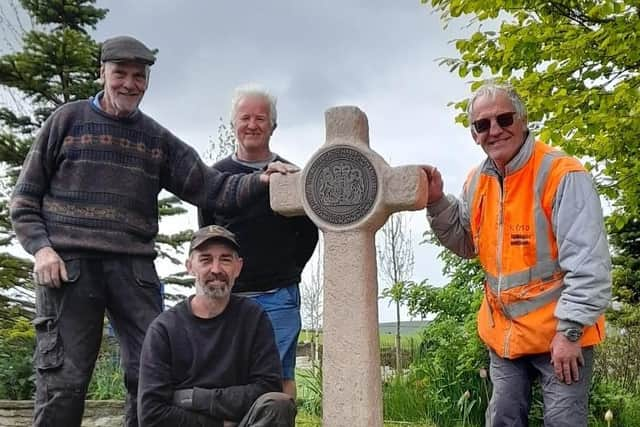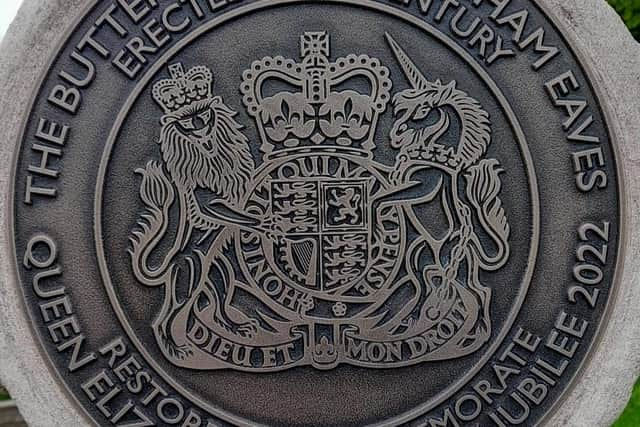Medieval history brought alive by Butter Cross thanks to Habergham Eaves Parish Council
and live on Freeview channel 276
Habergham Eaves Parish Council successfully won funding from the Community Foundation for Lancashire to create a Butter Cross to mark the Queen’s platinum jubilee in 2022.
Designed by Lancashire artist Shane Johnstone, the cross now has pride of place in the garden, next to the new care home for the elderly, on the former site of the Bull and Butcher pub in Manchester Road.
Advertisement
Hide AdAdvertisement
Hide AdThe garden was closed while the home was being built and the cross adds a historical feel to the area, which was once a thriving wayside trading place for dairy goods.


Only a stone stump and socket remain of the old cross, which is in a nearby field. The new monument stands 1.5 metres tall and has a plaque to commemorate its ancient and modern history. It was installed by volunteers, Ivor Emo and Ian and Neil Whalley, who have worked with Shane on a milestone project in Cliviger.
Habergham Eaves Parish Council chairman, Coun. Pat Osbaldeston said: “The Butter Cross is part of the parish’s history and we used the opportunity of the Queen’s Jubilee to create a modern monument. Our parish has one of the lowest precepts in the area and this project was only made possible by the funding from the Community Foundation for Lancashire and the expertise of Shane, Ivor, Ian and Neil, who gave up a lot of their time to help.’’
The cross has a fascinating history wrapped up in religious conflict, gender politics and early capitalism. According to medieval law, sons inherited their family’s land and daughters, the animals. Expertise in livestock management and the commercial potential of butter and cheese production was held by the medieval women.


Advertisement
Hide AdAdvertisement
Hide Ad“A knowledgeable woman could acquire substantial power and influence at these trading places, usually found at crossroads between villages. The male-dominated guilds and councils of the newly-established market towns looked upon this commercial independence with mistrust, superstition and envy.
“Many crosses were destroyed or moved to market enclosures in towns where traders were charged a fee for access,” explained Shane.
